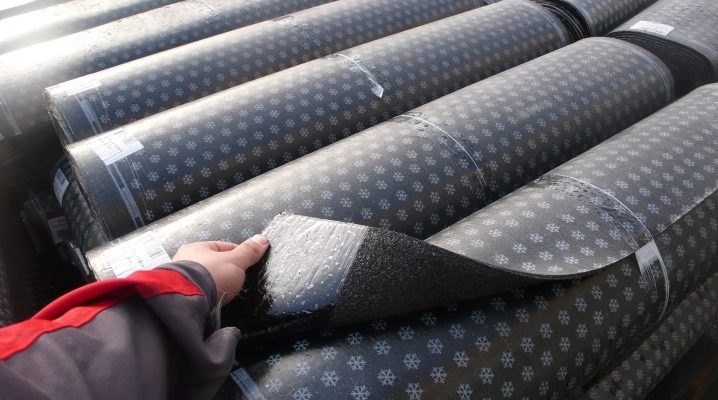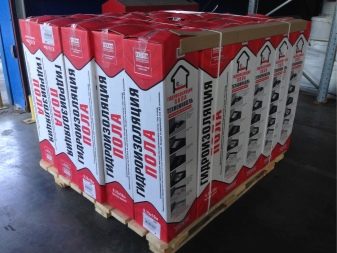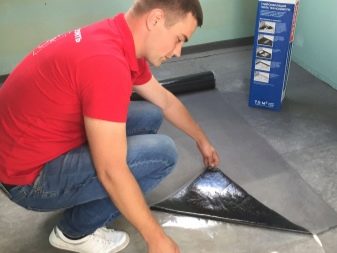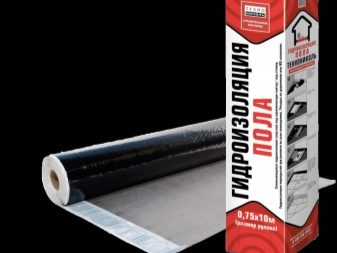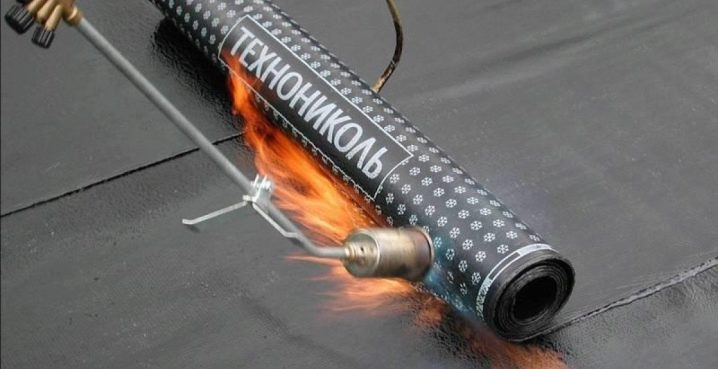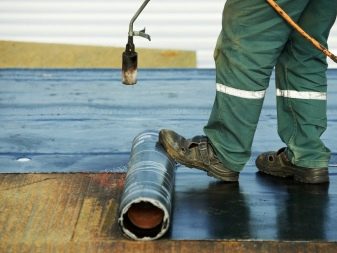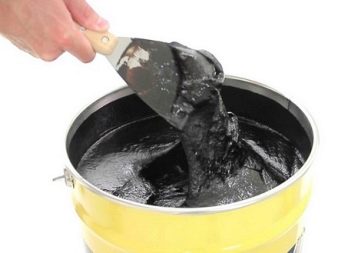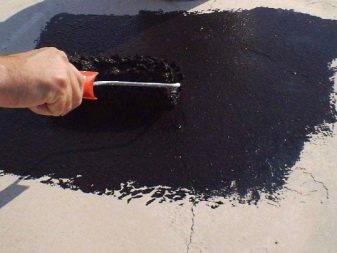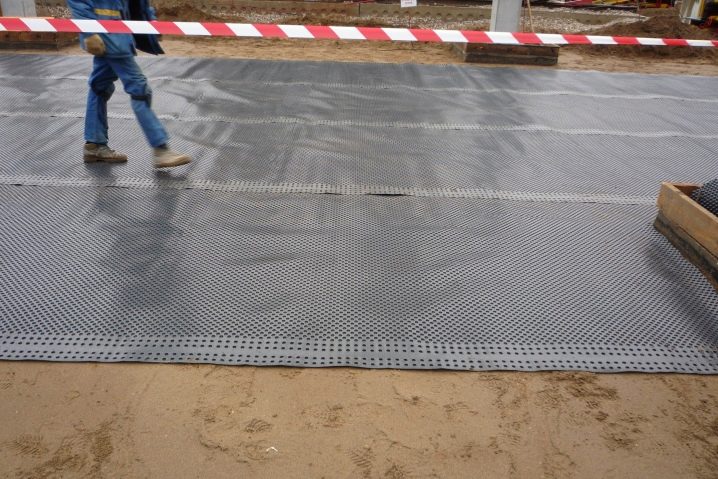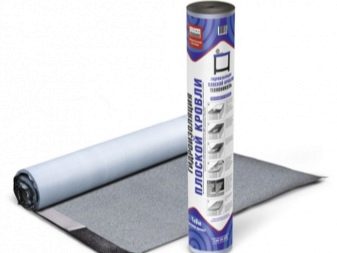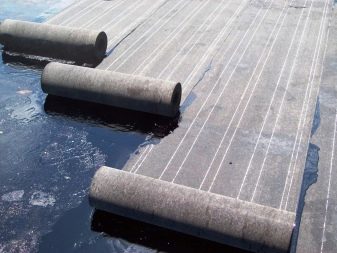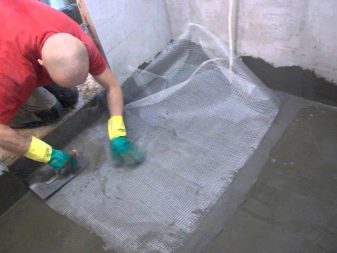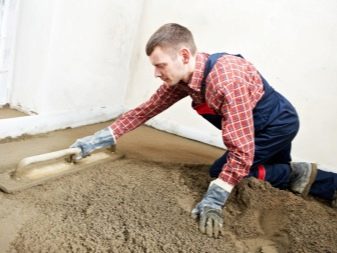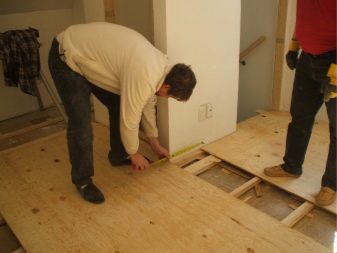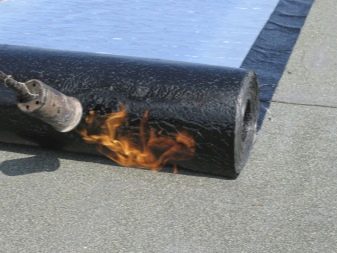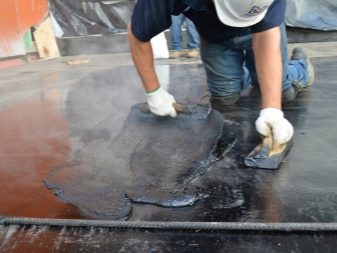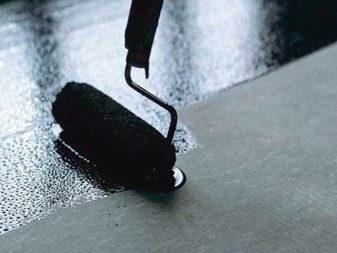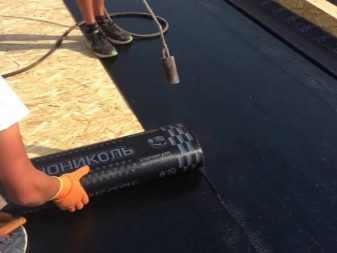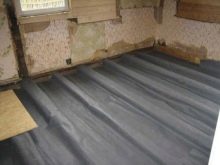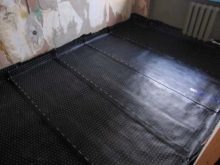Floor waterproofing "TechnoNIKOL": features and installation rules
Floor waterproofing is performed to protect concrete foundations and wooden surfaces from moisture leakage from plumbing, groundwater and atmospheric moisture, preventing the appearance of fungus and the formation of mold.
The modern market offers many types of floor waterproofing materials, but the most popular roll waterproofing materials of the international brand "TechnoNIKOL". This is evidenced by numerous reviews of consumers of its products on the Internet.
Varieties of waterproofing materials for the floor
The waterproofing rolls produced by modern manufacturers differ in the way they are fixed to the base and in the type of base material.According to the method of attachment, it is customary to distinguish between adhesive, filler and mechanically fixed waterproofing materials.
Weldable Insulation usually has a basis of fiberglass, fiberglass or polyester, which have become substitutes for traditionally used cardboard.
The binding component of roll waterproofing are bitumen mastics and their bitumen-polymer grades (often with atactic polypropylene (APP) added to them, which is also called artificial plastic or styrene-butadiene-styrene (SBS), also called artificial rubber).
Roll built-up waterproofing is one of the most popular materials due to its performance, simple installation and affordability. With the right (in compliance with the required technology) laying such waterproofing forms a whole without gaps and joints, which significantly increases its waterproofing quality.
Mechanically fixed Roll waterproofing differs from the deposited version in that the bottom layer in it is not plastic film, but fine-grained sand.The prototype of this kind of roll waterproofing with a mechanical method of attaching it to the surface is the well-known roofing material.
Modern rolled waterproofing is attached to the surface with screws or patch slats. The disadvantage of using this material is the complexity of its installation and low efficiency in protecting the surface from moisture.
Pasty waterproofing or, in other words, adhesive waterproofing, like the weld, has a base consisting of polyvinyl chloride or fiberglass with a bitumen-polymer component and mineral chips applied on it. Laying glue waterproofing is done with mastic or glue based on epoxy resin. Reliable moisture protection is achieved by creating 2-5 layers of waterproofing material.
Okleechnye waterproofing mounted on any basis - for their installation does not need special professional knowledge or additional tools. The main condition for the proper implementation of waterproofing adhesive materials is to prepare a flat (without protrusions) surface of the base under them.
Insulating composition of rolled waterproofing materials
The main ingredient for such materials can be bitumen compositions, bitumen-polymer compositions and membrane waterproofing.
Bituminous waterproofing composition is a bitumen resin mixed with crushed basalt-shale crumb. This combination is used in the production of roofing material, construction roofing and glass-ruberoid.
Bitumen-polymer composition is obtained by adding special additives to the bitumen, designed to increase its elasticity and heat resistance. Plastic modifiers in such compositions are artificial rubber (or plastic). Such modifying additives are needed to increase the resistance of the bitumen component to temperature changes and ultraviolet radiation, which makes it possible to use this type of coating in areas with hot climates.
Membrane insulation belongs to a new generation of high-tech materials. It is made of high-density or low-density polyethylene, polyvinyl chloride, or polyephepine, and is a thin film 0.2 to 2 mm thick.For some varieties of membrane waterproofing coating, a layer of corrugation is applied to more effectively bond with the solution.
The advantages of waterproofing membranes are their mechanical strength, resistance to damage, long service life (up to 50 years), environmental friendliness, resistance to decay and decomposition, as well as a wide temperature range from -40 to +50 degrees Celsius.
The rolled waterproofing of the TehnoNIKOL brand is one of the main leaders among the building materials of waterproofing purposes in this segment of the international market. The basis for such high popularity of this type of TekhnoNIKOL products are:
- high level of their reliability and effectiveness of protection against moisture penetration and the formation of condensate accumulations;
- biological and chemical resistance;
- the ability to maintain flexibility and elasticity at low temperatures;
- ability to withstand significant tensile loads;
- long term (about 35 years) service life;
- profitability;
- easy installation
All these qualities of TekhnoNIKOL hydroisolates are due to the use of multi-layercompositions with a polyester base, two layers of bitumen-polymer filler and a protective film. Production of all types of brand coatings is carried out in accordance with state standards and current technological construction standards.
Installation instructions
Depending on what type of floor the master is dealing with, waterproofing can be mounted by means of sticker, fusing or flooring.
The first method is suitable for all types of floors. For concrete floor surfaces, surfacing is used, and for wooden floors, flooring is used.
Before starting work, the most appropriate solution is to completely remove the old coating, and it is desirable to free everything (up to the concrete base). This is followed by a thorough removal of debris, accumulations of dust and dirt, and the sealing of all existing chips and cracks.
Existing protrusions and irregularities are removed grinder. The concrete floor is leveled with a construction mixture and dried for a day, after which its surface is polished with a large emery cloth.
If the waterproofing is laid on a wooden floor, it should be ensured that all the boards are intact, there is no creaking or bending of the floors. If necessary, you should make the necessary repairs to the wooden floor before installing the waterproofing, for example, by replacing individual floorboards.
Before starting the main works, the joints of the floor with the walls are rounded off with the help of cement mortar for a more even laying of the insulating material and in order to avoid bends. After waiting for the final setting of the cement mixture and drying the premises, a primer is applied twice to the floor, and the junctions of the walls and the floor are treated with a moisture-resistant composition or with an artificial rubber tape.
Before laying waterproofing material is aged in the room for at least 24 hours. The roll at the same time should be deployed or cut into pieces along the length of the room. Fastening of the waterproofing covering by the “flooring” should be done in such a way that its separate parts would overlap one another with an overlap of 20-25 cm. At the end of the installation, the material is fixed using self-tapping screws or pressed against the floor boards.
Installation of roll-up waterproofing will be performed using a propane gas burner to create a temperature of 1450-1600 degrees. With its help, the lower layer of material is melted and fixed on the floor surface.It should be taken into account that in case of deviation from the temperature recommended for the flame to one or the other side, peeling of the insulating coating may occur.
The adhesive method of laying waterproofing is to apply bitumen-polymer mastic or glue on the floor. These substances must be heated to a temperature of 25-250 degrees.
The surfaces are pre-cleaned of dust and debris, and the substrate is primed with a bituminous primer, for which a water-based primer is recommended. Then the material is tried on in place, and its laying starts from one of the corners. The roll is rolled to the middle, incised and the protective film is removed from it.
If an adhesive layer has already been applied to the coating, then there is no need to pretreat it with mastic. At the end of the laying, all areas of the docking of the waterproofing materials are coated with glue, and the surface of the waterproofing is rolled with a pressure roller.
In order to protect the floor from moisture more reliably, it is recommended that the insulating material be laid in two layers perpendicular to each other. After the coating has hardenedexisting defects (irregularities or air bubbles) are eliminated and the concrete screed is being laid, ceramic tiles or other surfaces are being laid.
Laying self-adhesive roll waterproofing floor "TechnoNIKOL" should be done at a room temperature of more than + 10 ° C.
After that, the material, which is laid with longitudinal overlaps of about 80-100 mm, is glued and pressed. At the same time about 150 mm are allocated to the end overlaps. Overlaps are coated with bitumen mastic, the thickness of which is about 1 mm. On vertical surfaces, the material should be brought to the required height.
The TekhnoNIKOL brand ensures the development of new models of roll waterproofing for use in various climatic conditions and taking into account the production needs of the consumer. Baseless self-adhesive rolled waterproofing floor coverings and foundations are widely used. In addition to protection against moisture, waterproofing coatings manufactured by TekhnoNIKOL are able to protect the premises from noise, dust and gaseous substances.
On how to install waterproofing floor "TenenIKOL", see the following video.
